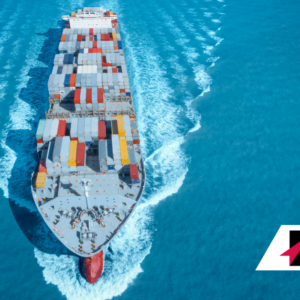Operation Warp Speed, the program put together by the United States government, has fast-tracked the approval of the COVID-19 vaccine. This means that some Americans can start to be vaccinated at the end of this month. But getting the COVID-19 vaccine distributed to the entire country will present a unique logistics challenge, especially as the vaccine is time-sensitive.
The Logistics Challenge
Distributing the vaccine as quickly as possible so it can save lives is the first concern. However, the logistics of the vaccine distribution is complicated by three factors:
- Vaccinating a large number of people within a short period of time
- The vaccine requires two doses (about three weeks apart by the same manufacturer)
- The low temperature at which it needs to be stored
The temperature factor will need to be considered in the shipping of the vaccine, as it is important to maintain its efficacy. Pfizer’s vaccine, for example, needs to be stored at -94 degrees Fahrenheit. Throwing another wrench in the logistics challenge: the vaccine only lasts for 10 days once it has been shipped before it needs to be used.
Shipping the COVID-19 Vaccine
The process of shipping the COVID-19 vaccine is an intricate one. The shipping will be handled by the vaccine manufacturer themselves or through their medical supply companies. Pfizer, who will distribute through its own facilities is has already invested in 350 large freezers to hold the vaccines once they are manufactured and ready to be shipped via plane and truck. The vaccine will be shipping in thermal containers filled with dry ice, with 975 vials of the vaccine which each contain five doses per container. Every day six trucks will take doses to air carriers such as FedEx, UPS, or DHL which will ship them across the U.S. within two days. The vials can remain in their shipping containers, but they can only be opened two times a day.
Moderna’s vaccine can be stored at -4 degrees Fahrenheit which means it can go into a normal freezer once shipped. Already, it is being discussed that the Moderna vaccine might be better for rural areas, which won’t be equipped with large freezers to store the Pfizer vaccine.
Commercial Airlines to the Rescue
With such a large amount of the vaccine that needs to be shipped in a short period of time, the FAA (Federal Aviation Administration) said it supports the first mass air shipment of the COVID-19 vaccine. The FAA said it is still working on exactly how to best ship the vaccines given the special specifications.
Part of that solution may involve commercial airlines, which have felt the brunt of the pandemic with a significantly lower number of people flying. Lufthansa, one of the world’s largest cargo carriers, began planning for the arrival of the COVID-19 vaccine months ago. They have created a task force to figure out how to fit more of the containers on the Boeing 777 and MD-11 freighters.
Airlines will become the backbone of the shipment of this vaccine, flying the special containers across the world. The fact that all airlines have cut their staff due to the reduced air travel will make it that much more difficult. Alexandre de Juniac, IATA’s (International Air Transport Association) Director General and CEO stated, “Delivering billions of doses of a vaccine that must be transported and stored in a deep-frozen state to the entire world efficiently will involve hugely complex logistical challenges across the supply chain.”
Approximately 2,000 carriers are responsible for carrying half of the goods shipped by air, while the remainder goes into regular aircraft. With 1.3 billion doses from Pfizer, 500 million from Moderna, and 2 billion from AstraZeneca manufactured by the end of 2021, cargo carriers alone simply won’t be able to handle the volume. Commercial airlines are eager to step in and get people vaccinated so air travel can resume normally.
Several airlines such as United, Delta, and American have been getting ready to carry the vaccine. American Airlines and Delta have stated they have temperature-controlled containers and pre-packed shipments with cold packs or dry ice. United has put charter flights on its schedule to get doses of the Pfizer vaccine out to distribution. The goal is to have enough air cargo capacity to handle the demand.
Beyond Air Shipping
Once the vaccines are shipped via air, cars, trucks and vans will need to be used to get the vaccines to their final destination of hospitals and pharmacies. The real obstacle becomes getting the vaccine to more remote locations within the 10-day shipping timeframe. However, the logistics industry, particularly commercial airline carriers, feel ready to meet the challenge of getting this vaccine distributed as quickly as possible.
Your Trusted Partner
At Red Arrow Logistics, we provide expertise and white glove customer service with fast-growing, complex, and high-value supply chains. As the next-generation model of logistics companies, we offer tailored transportation and logistics solutions — from single shipments to complex over-dimensional and international orders.
Red Arrow offers the scale and scope of services including air, ocean, and ground transportation to meet the budget and schedule requirements of the largest and smallest companies alike. If we can be of assistance, please email us at info@redarrowlogistics.com or give us a call at 425-747-7914.




